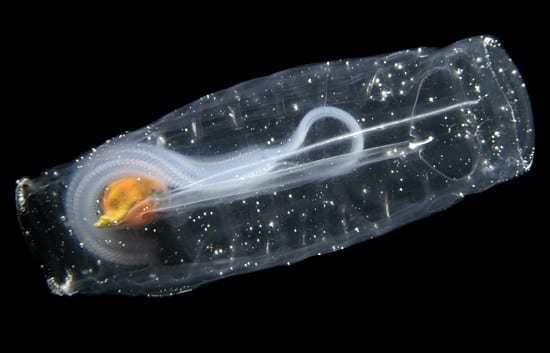Salps—transparent organism that range
from 0.5 to five inches long—are the subject of MIT-WHOI Joint Program graduate student Kelly Rakow Sutherland’s PhD dissertation. Observing them in their habitat off the Pacific Coast of Panama, she focused on how the creatures balance their food-energy resources, which they use to propel themselves. Salps swim and eat by rhythmic pulses. Each pulse draws seawater in through a siphon opening at the front end of the animal. Then the salp contracts muscle bands, and the water shoots out another siphon at its rear end, producing a jet that propels the animal forward. In the process, food particles in the water (mostly tiny plankton) are caught on a mesh of mucus strands inside the salp’s mostly hollow body. There are about 40 species of salps with a widely diverse body shapes. Rakow Sutherland posits that some species may be good at filtering seawater through their feeding mesh at the expense of being good swimmers, and vice versa.
(Photo by Larry Madin, Woods Hole Oceanographic Institution)
Image and Visual Licensing
WHOI copyright digital assets (stills and video) on this website can be licensed for non-commercial use upon request and approval. Please submit your request via our Media Request Form.
For assistance or accessibility accommodations, call (508) 289-2647.
